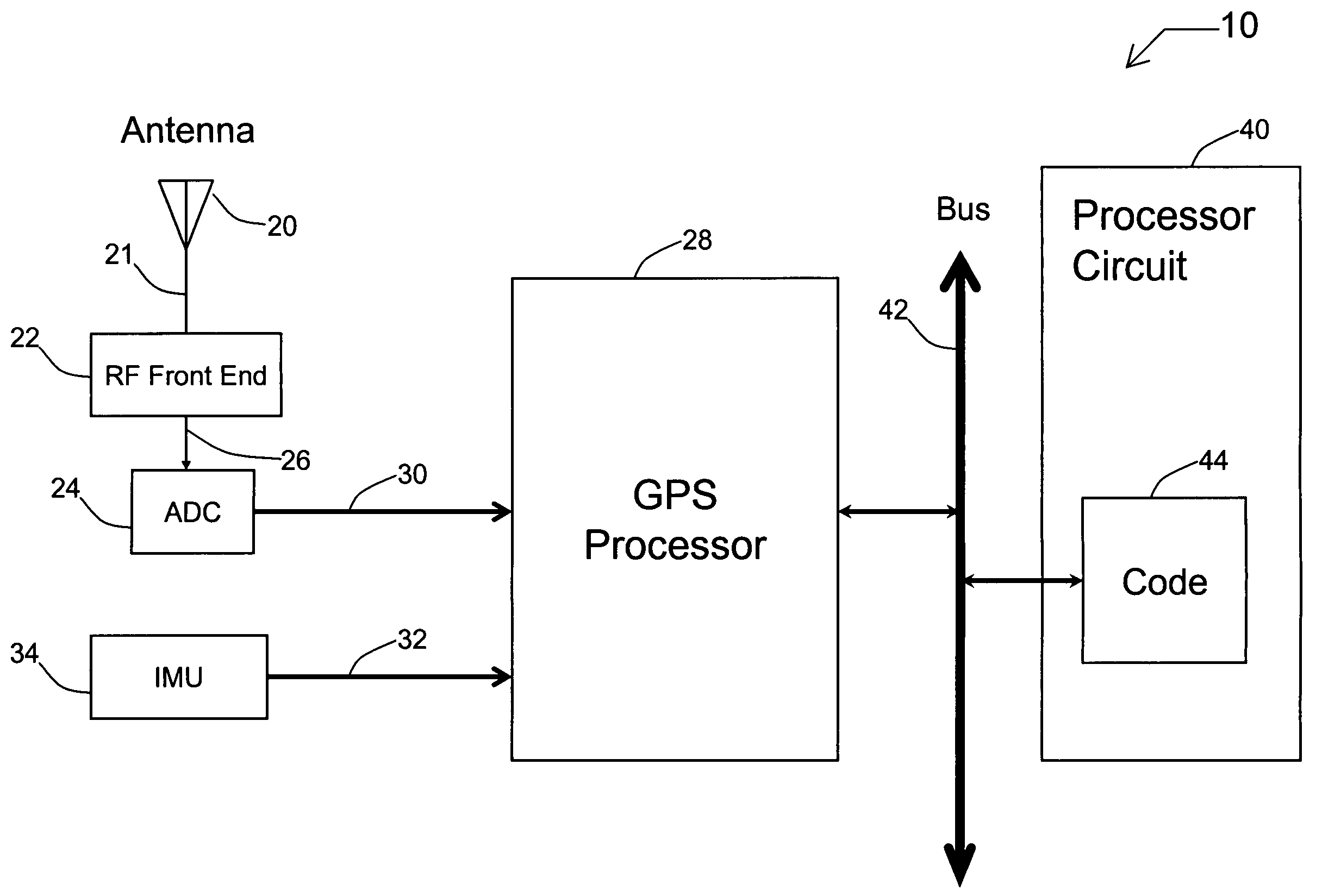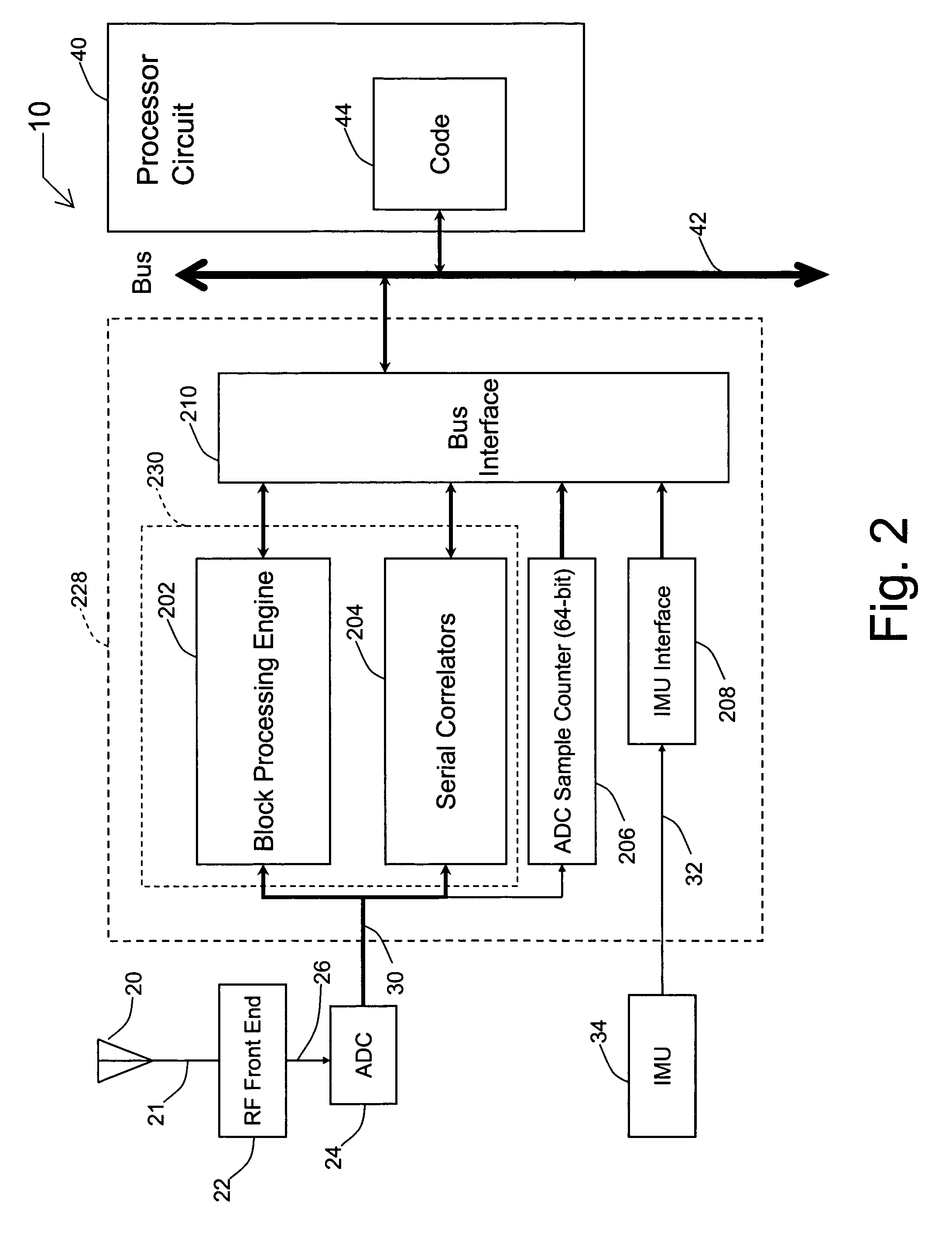Systems and methods for acquisition and tracking of low CNR GPS signals
a technology of gps signals and receivers, applied in surveying and navigation, navigation instruments, instruments, etc., can solve the problems of limiting the use of conventional gps receivers for a number of applications, unable to reliably acquire gps signals, etc., and achieves low carrier-to-noise ratios (“cnr”), and low carrier-to-noise ratios
- Summary
- Abstract
- Description
- Claims
- Application Information
AI Technical Summary
Benefits of technology
Problems solved by technology
Method used
Image
Examples
example 2
case, 10 frames are used for the bit detection; the bit error rate is 0.0054;
[0179]Example 3: 15 dB-Hz case, 20 frames are used for the bit detection; the bit error rate is 7.47·10−5;
[0180]Example 3: 15 dB-Hz case, 40 frames are used for the bit detection; the bit error rate is 1.97·10−8.
[0181]It is noted that Equation (22) does not consider the influence of word sign polarity resolution errors. The sign error rate is however negligible as compared to the bit error rate of the energy-based bit guessing. Specifically, sign error rate is computed as follows:
[0182]signerrorrate=p·(1-p)+p2p=∑k=1224C2424-k·ber0k·(1-ber0)24-k(23)
where 24 is the number of bits in the word excluding parity bits.
[0183]The corresponding frame sign error rate for a 15 dB-Hz case is 1.4095·10−5 whereas the bit error rate of the energy-based bit guessing (bero) equals 0.1304. Thus, frame sign errors serve as high-order effects and do not have to be considered to estimate the bit error rate of the bit deco...
PUM
 Login to View More
Login to View More Abstract
Description
Claims
Application Information
 Login to View More
Login to View More - R&D
- Intellectual Property
- Life Sciences
- Materials
- Tech Scout
- Unparalleled Data Quality
- Higher Quality Content
- 60% Fewer Hallucinations
Browse by: Latest US Patents, China's latest patents, Technical Efficacy Thesaurus, Application Domain, Technology Topic, Popular Technical Reports.
© 2025 PatSnap. All rights reserved.Legal|Privacy policy|Modern Slavery Act Transparency Statement|Sitemap|About US| Contact US: help@patsnap.com



